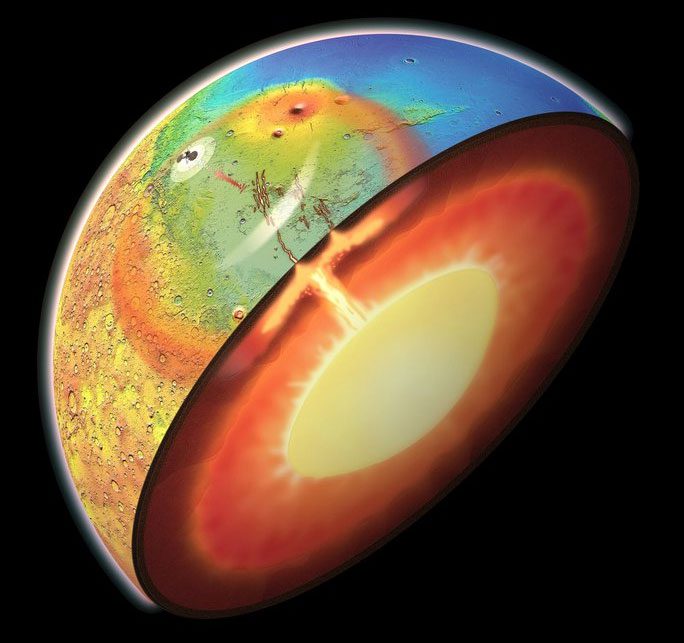An incredibly important mechanism for the existence of ourselves and all living beings, once thought to be exclusive to Earth, has now been clearly identified on another planet by NASA’s lander.
According to SciTech Daily, scientists from the University of Arizona (USA) have challenged current views on the geodynamic evolution of Mars by providing evidence of a mantle plume on this seemingly “dead” planet.
The study, recently published in Nature Astronomy, is based on data collected by NASA about Mars, particularly from the InSight lander—famous for detecting Martian seismic activity.

Cross-section of Mars with a mantle plume rising beneath the ancient river plains – (Photo: Adrien Broquet & Audrey Lasbordes)
A mantle plume is the upwelling of an unusual hot rock mass within a planet’s mantle, which can partially melt the rocks in its path as it rises closer to the crust and often creates volcanic hotspots.
This structure was previously thought to be unique to Earth, just as seismic activity and tectonic processes were considered exclusive to our planet—elements that contribute to making Earth habitable by stabilizing its climate and atmosphere.
However, recent evidence has revealed that Venus also has a mantle plume, and now Mars has been confirmed to have one as well. Both of these planets lie within the Goldilocks zone of the Solar System alongside Earth, making these findings highly anticipated.
According to researcher Adrien Broquet from the Lunar and Planetary Laboratory at the University of Arizona, the study indicates that the mantle plume on Mars is massive and active, deforming the surface of the Elysium Planitia by pushing it upward, while also causing earthquakes, fractures, and volcanic activity similar to how Earth formed Hawaii.
A significant amount of volcanic activity during Mars’s early history created the largest volcanoes in the Solar System and covered most of the northern hemisphere of the planet with sediments.
Unfortunately, according to Dr. Broquet, recent minor activities related to the aforementioned mantle plume are merely the passive processes of a planet that is gradually cooling, rather than signs of a planet “reviving” as many had hoped.
Nonetheless, this once again affirms that Mars was once a dynamic planet, providing a solid basis for NASA’s goal of uncovering evidence of ancient life.




















































